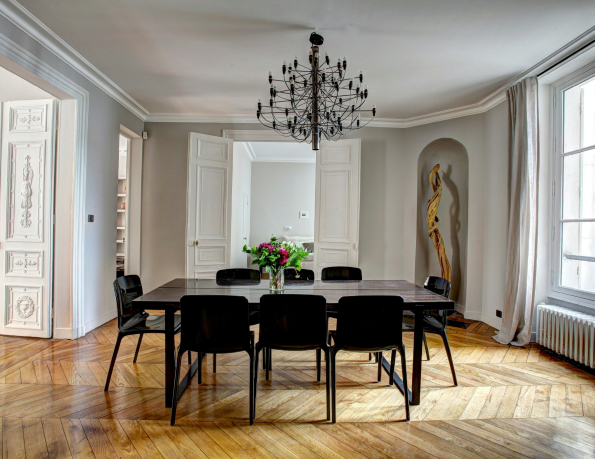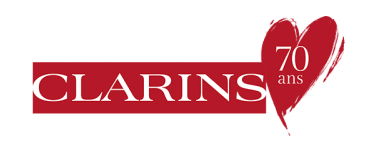1,955 euros / month
Currently rented
Unfurnished 1-bedroom duplex apartment for rent – Rue Saint-Dominique, Paris 7ᵗʰLocated near the Invalides (metro lines 8, 13 and RER C...
rue Saint-Dominique
75007
Ecole Militaire
Ref: 250522
Our advisers and managers provide day-to-day support to help you find a reliable tenant and manage your property portfolio.
We offer every professional guarantee to protect your interests and secure your rent.
Our lettings, rental management and renovation services guarantee a regular rental income while freeing you from renting and day-to-day management constraints.


Do you own one or more properties in Paris that you would like to let or have managed by a professional?
Our premium tenants are companies, international organisations, or private individuals looking for furnished or unfurnished properties to let for short or long periods.
Get your property valuation



We offer two types of rental agreement for furnished and unfurnished rentals:
Corporate rental & second home rental agreement
This type of lease is suited for companies looking to rent for their employees or for those who want to rent as a secondary residence.
This option offers great flexibility with adjustable rental durations (a minimum of 3 months for a furnished property and 12 months for an unfurnished property).
Advantages: Easier termination conditions, simplified lease formalities, and fewer regulatory constraints (exemption from rent control, reduced agency fees).
Rental agreement for the tenant's primary residence
This type of lease is reserved for individuals whose property is their main home.
This rental agreement offers financial security with terms of 1 year renewable for furnished rentals and 3 years renewable for unfurnished rentals.
Advantages: This type of rental is ideal for recurring rental income and fewer vacancies.
Let us know your availability and one of our advisors will contact you shortly.
Exclusive mandate *
90 % incl. VAT of one month's rent, including charges
Non-exclusive mandate **
One month's rent including charges
Exclusive mandate
10 % incl. VAT of one month's rent, including charges
Non-exclusive mandate
25 % incl. VAT of one month's rent, including charges
* If the tenant vacates within the first 12 months, a 50% discount is applied.
This discount is 100% in the case of a management mandate.
** If the tenant vacates within the first 12 months, a 30% discount is applied.
Reactive and available team
Professional guarantees
Complete management: administrative and technical
Renovation and furnishing services
Opt for our rental management service to explore a carefree post-letting experience.
Take advantage of a comprehensive service that frees up your time and gives you peace of mind while maximising the returns on your property investment.
Please find out how we make rental management a simple and profitable experience.
We are committed to caring for your property with the same attention and dedication as if it were our own.
1,955 euros / month
Currently rented
Unfurnished 1-bedroom duplex apartment for rent – Rue Saint-Dominique, Paris 7ᵗʰLocated near the Invalides (metro lines 8, 13 and RER C...
rue Saint-Dominique
75007
Ecole Militaire
Ref: 250522
3,800 euros / month
Available Immediately
Furnished 3-Bedroom Apartment for Rent – Rue Cauchy, Paris 15ᵗʰLocated on Rue Cauchy in the 15ᵗʰ arrondissement of Paris, close to Balard...
rue Cauchy
75015
Javel
Ref: 250532
1,500 euros / month
Availability to be confirmed: 01 June 2026
Furnished one-bedroom apartment ideally located on Rue Rousselet in the 7th arrondissement, between Invalides and Montparnasse neighbourhood...
rue Rousselet
75007
Invalides
Ref: 240480
Find out our detailed answers to the questions most frequently asked by Paris-Housing landlords.
There are several advantages to using an estate agency to let your property. The agency is responsible for finding and selecting the tenant, promoting the property, and drawing up the lease in accordance with the law. It also thoroughly checks the identity and solvency of each prospective tenant, giving the landlord extra peace of mind. In addition, an agency such as Paris-Housing has access to a vast network of international and corporate clients, offering a level of visibility that individuals could not achieve on their own.
Both solutions have advantages and disadvantages for landlords. Here are the main differences to help you decide:
Higher return: there is strong demand for luxury furnished flats, from expatriate executives to students at prestigious universities and international civil servants. Furnished properties rent for an average of 10-20% more.
A flexible solution: if you need clarification on how long you want to rent, let us offer short-term contracts with a minimum 3-month civil code lease.
Tax advantages: rental income is treated as industrial and commercial profits (BIC), giving you a choice between the flat-rate tax system, with a 50% allowance on income, and the ‘actual' tax system, under which all expenses are deducted, and the property is depreciated, which can often considerably reduce or even cancel taxation.
Regular income: offering financial stability, unfurnished rentals guarantees regular incomes with a minimum three-year lease for individuals and six years if the landlord is a company.
Maximum occupancy rate: lower rental vacancy, marketing costs are quickly amortised.
Lower maintenance costs: with less maintenance and equipment replacement, unfurnished rental means lower refurbishment costs between lettings.
Furnished and equipped accommodation offers undeniable advantages for the landlord:
First impressions are crucial, especially for furnished rentals, where the selection of a rental property is often based on photos. Decoration play a crucial role in the choice of tenants. Careful decoration and a selection of modern furniture that appeals to a wide audience can significantly broaden the pool of potential tenants.
The flat should offer a welcoming and functional environment, including essential daily facilities. Choosing quality fixtures, fittings, and furniture helps to reduce maintenance costs and the need to replace them frequently. For electrical appliances, we recommend choosing products with a 5-year after-sales guarantee.
As soon as they move in, tenants should find everything they need for everyday comfort.
In addition to the list of compulsory furnishings available on service-public.fr, we have compiled a comprehensive list of equipment to help you optimise the furnishings and fittings in your property.
To prepare your property for rent, it is essential to follow several key steps.
Cleaning and Depersonalizing: clean the property thoroughly and remove all personal items. This allows potential tenants to better visualize themselves living in the space during visits.
Making Necessary Repairs: ensure that anything damaged or worn is repaired to guarantee the proper functioning of all installations. Install low-cost fixtures and light fittings to avoid having exposed sockets and bulbs that can devalue the property. Fill in all screw holes and remove curtain rods.
Painting: if necessary, apply a fresh coat of paint in neutral colors. This gives the property a clean and new appearance.
Checking Essential Equipment: ensure that all essential installations are working correctly, such as heating, the operation of doors and windows, and household appliances.
Organizing the Space Functionally: arrange the spaces to avoid clutter, making it easier for tenants to envision their future life in the property.
For furnished lets:
For unfurnished tenancies:
Paris-Housing can manage the rental management of accommodation for a minimum of three months (for a tenant's second home or a company lease). Although the minimum period is three months, most rental requests are for extended periods, ranging from 6 to 12 months or more. Also, all prospective tenants must have the option of extending their stay if necessary.
In France it's important to make the difference between "short-term" and "seasonal" rentals:
We offer two types of rental agreements for both furnished and unfurnished properties:
The Bail Code Civil and the Bail Loi Alur are two types of rental agreements governed by different legislation in France. The main differences between the two are as follows:
Contract content:
Lease term:
Rent controls:
Our team is always ready to assist you.